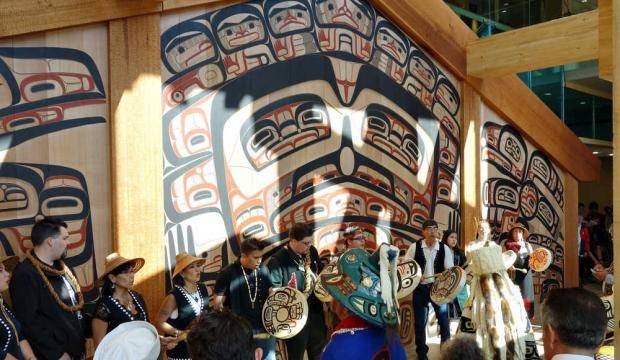Nearly 100 years ago, the small town of Santa Fe, New Mexico, held its first Santa Fe Indian Market. The market, though humble at first, has grown into an economic goliath for the town, drawing an estimated 100,000 people from around the world every year. Over four days each August, the event brings in more than $100 million in revenues to the region.
The market has been nothing short of phenomenal. Through it, Santa Fe has created global demand for Southwest art and a venue for collectors, establishing the town as an art mecca and the place to acquire this now-coveted art form.
We have a dream to do for Northwest Coast (NWC) art and Alaska what Santa Fe did for Southwest art and New Mexico. We have a dream to make Juneau the Northwest Coast art capital of the world. Our vision is to make Juneau a destination for art lovers and to kindle a global passion for this great and unique art form. Though Alaska Native and NWC art currently enjoy international recognition, we as a community, region and state are not tapping this economic opportunity to the extent we could be.
What is Northwest Coast Art?
Northwest Coast art evolved over several thousand years in the rich indigenous societies of the Pacific Northwest. It has been acclaimed throughout the world as a uniquely distinctive art practice known for its formline designs — the continuous, flowing, curvilinear lines that turn, swell and diminish in a prescribed manner — and it has been aggressively sought by collectors and museums from around the globe.
Northwest Coast art occupies a unique and important position in America’s artistic traditions and continues to be a major attraction for visitors. Like jazz music, designated a national treasure by Congress in 1987, NWC art should be considered a national treasure of the United States.
SHI initiatives
We already know that NWC art has a significant economic impact on Juneau. A study by the McDowell Group on SHI’s operational spending impacts found that in 2013, SHI’s total economic output was $3 million that year. That number has grown with the 2015 opening of SHI’s Walter Soboleff Building, where thousands of visitors learn about NWC art and cultures. We also opened the Sealaska Heritage Store, expanding the market for Alaska Native art and art by non-Natives. Store revenues are reinvested in art programming.
A 2012 study by the McDowell Group found SHI’s Celebration, a biennial festival celebrating NWC art and cultures, has an economic impact of $2.2 million on Juneau each time it is held. This number increased after Celebration expanded to four days and the event saw a spike in attendance of visitors and tour groups.
The arts industry in Southeast Alaska is already a $58 million industry, but we are confident that with a comprehensive plan and community-wide support, we can do so much more.
Through our Northwest Coast Arts Capital Initiative, we are implementing measures to expand the market for NWC art; integrate generic NWC art (not clan crests) into public facilities; designate NWC art as a national treasure; develop a Native Artist Park to create and display monumental art; and teach NWC art in schools, to name a few.
We are working to amend laws that fund certain types of training but exclude training in the arts. SHI also is advocating for a revision to the state’s Percent for the Art in Public Places statute to require that funds go only to Alaska artists and for the formation of a city arts committee to help in the selection of city- and state-funded art projects.
SHI has partnered with the University of Alaska Southeast and the Institute of American Indian Arts in Santa Fe to provide expanded NWC art opportunities for Alaska students. And, we’ve integrated visual and performing arts in schools.
We have much to do, but we know we can succeed. We are driven by the knowledge that the arts are already a economic engine here and motivated by the good that has come from the Santa Fe Indian Market. We hope you will join us in this endeavor.
• Rosita Worl is the president of Sealaska Heritage Institute, a private nonprofit founded in 1980 to perpetuate and enhance Tlingit, Haida and Tsimshian cultures of Southeast Alaska. SHI’s goals are to promote cultural diversity and cross-cultural understanding through public services and events. SHI also conducts social scientific and public policy research and advocacy that promotes Alaska Native arts, cultures, history and education statewide. My Turns and Letters to the Editor represent the view of the author, not the view of the Juneau Empire.

